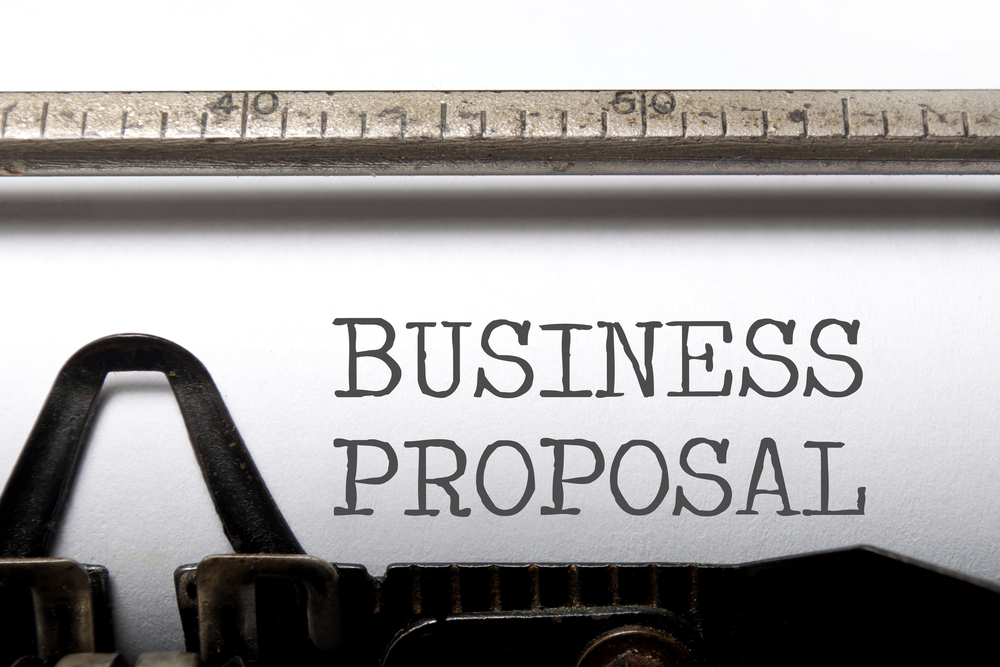How do you feel when a prospect says, “Send me a proposal.”
Excited? “Oooh, they want us to work for them.”
Optimistic? “They wouldn’t ask for a proposal unless they want to buy.”
Fearful? “Will they see the fee and turn us down?”
Confused? “What does it mean when someone asks for a proposal?”
Puzzled? “We don’t know yet what they need, how can we send them a proposal?”
Before you hit ‘send’ let’s step back and put the document you call a proposal into context.
Proposal defined
‘Proposal’ is defined as “a plan or suggestion, especially a formal or written one, put forward for consideration or discussion by others.”
I added the emphasis on consideration or discussion because too many prospects don’t think of a proposal as the opening of a discussion.
- They think of it as ‘take it or leave it.’
- Prospective buyers who are not interested ask for a proposal to get you off the phone.
- They think “we’ll get a proposal and then tell them it doesn’t work for us.” End of conversation.
Too many professional and business services firms also think of the proposal as take it or leave it.
“We’ll do some discovery, qualify the prospect, get their budget, and do a demo, then throw everything we can into the proposal. How could they not accept?”
Since I advise my professional and business services clients to make offers (my preferred word because I feel it invites discussion) using the Choice Framework, I am often asked for more insight into how offers work to acquire new clients.
Three key steps to acquire new clients with the Choice Framework
- The Getting to Know You Call. I hate (yes, hate!) the word discovery. Your prospects or current clients aren’t archeological digs, or scientific experiments that you approach with detachment. They are real people and need to be engaged with. It’s a two way street.
The 6 questions my clients ask are simple and engaging. They incorporate the Issue Chart and the Continuum of IMPACT. Used effectively, you will learn everything you need to know to understand whether and how your firm could deliver life changing differences to this particular person or firm.
- One of the questions is about money. You must discuss money before you make any offers. The question is phrased this way: “Do you have money to pay for this?”
Notice, the question isn’t “do you have a budget for this?” A budget is a specific document with specific line items. If there is no line item in a prospect’s budget for the need they hope to address with you, the answer is “no” and that ends the discussion.
When you ask about money you open the conversation. Money can come from anywhere. If they have money, they are free to discuss this further.
- Once you have listened carefully and captured their answers, you’re ready to make your three offers using the Choice Framework.
Start writing your offers with one that will deliver exactly the life changing differences they have told you they want (the Issue chart and Continuum of IMPACT). That is your IMPACT offer.
Then add other more significant life changing differences and call that your IMPACT PLUS offer.
Finally, write an offer that delivers somewhat smaller life changing differences than the IMPACT offer and call that IMPACT Light.
Each offer carries a fee that is proportional to the life changing differences you will deliver.
What’s the message?
This shows the client two important factors: your firm’s range of life changing differences and how the fee is connected to the IMPACTs you deliver.
Remember how I said that a proposal or offer should start a discussion, rather than be “take it or leave it”?
The Choice Framework is how that happens.
Clients are curious about the three offers.
They want to talk about the life changing differences you offer. Are there others you might have missed? Are there some they really don’t care about?
You can easily talk about fees when you’ve used the Choice Framework.
Each fee is clearly associated with certain IMPACTS.
While this doesn’t prevent requests for discounts or lower fees, the fact that you have already spelled out the connection between IMPACTs and fees gives you confidence to say, “We made an offer for that fee.” For example, if they want the IMPACTs for the fee of the IMPACT Light offer or they want IMPACT PLUS for the IMPACT fee.
Pause before proposing
Next time someone asks your firm for a proposal, don’t lose by rushing.
Take the time to ask them the 6 questions, including the one about money.
Some prospects will refuse to answer the 6 questions. Let them go.
Some will engage deeply on the questions. Listen carefully and make note of their answers.
Carefully write three offers using the Choice Framework.
About 70% will accept your IMPAC T offer. A few will go for IMPACT PLUS and a few others for IMPACT Light,
In every single case you will have confidence that you are delivering the right life changing differences for the right fee.
That is what I call a win-win.



